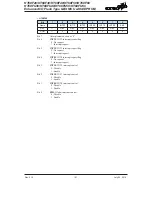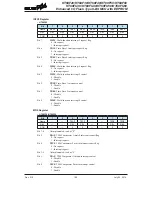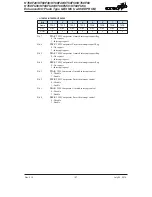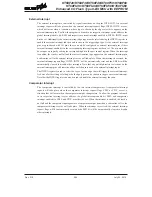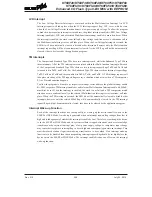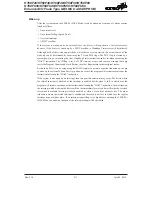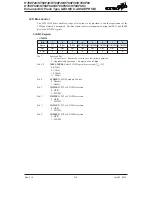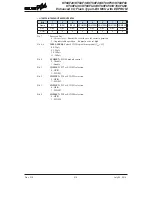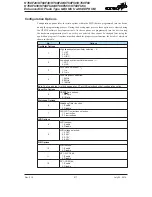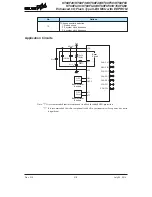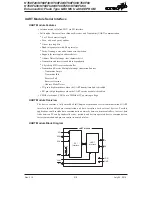
Rev. 2.10
20�
���� 02� 201�
Rev. 2.10
205
���� 02� 201�
HT68F20/HT68F30/HT68F40/HT68F50/HT68F60
HT68FU30/HT68FU40/HT68FU50/HT68FU60
Enhanced I/O Flash Type 8-Bit MCU with EEPROM
HT68F20/HT68F30/HT68F40/HT68F50/HT68F60
HT68FU30/HT68FU40/HT68FU50/HT68FU60
Enhanced I/O Flash Type 8-Bit MCU with EEPROM
External Interrupt
The external interrupts are controlled by signal transitions on the pins INT0~INT3. An external
interrupt request will take place when the external interrupt request flags, INT0F~INT3F, are set,
which will occur when a transition, whose type is chosen by the edge select bits, appears on the
external interrupt pins. To allow the program to branch to its respective interrupt vector address, the
global interrupt enable bit, EMI, and respective external interrupt enable bit, INT0E~INT3E, must
first be set. Additionally the correct interrupt edge type must be selected using the INTEG register to
enable the external interrupt function and to choose the trigger edge type. As the external interrupt
pins are pin-shared with I/O pins, they can only be configured as external interrupt pins if their
external interrupt enable bit in the corresponding interrupt register has been set. The pin must also
be setup as an input by setting the corresponding bit in the port control register. When the interrupt
is enabled, the stack is not full and the correct transition type appears on the external interrupt pin,
a subroutine call to the external interrupt vector, will take place. When the interrupt is serviced, the
external interrupt request flags, INT0F~INT3F, will be automatically reset and the EMI bit will be
automatically cleared to disable other interrupts. Note that any pull-high resistor selections on the
external interrupt pins will remain valid even if the pin is used as an external interrupt input.
The INTEG register is used to select the type of active edge that will trigger the external interrupt.
A choice of either rising or falling or both edge types can be chosen to trigger an external interrupt.
Note that the INTEG register can also be used to disable the external interrupt function.
Comparator Interrupt
The comparator interrupt is controlled by the two internal comparators. A comparator interrupt
request will take place when the comparator interrupt request flags, CP0F or CP1F, are set, a
situation that will occur when the comparator output changes state. To allow the program to branch
to its respective interrupt vector address, the global interrupt enable bit, EMI, and comparator
interrupt enable bits, CP0E and CP1E, must first be set. When the interrupt is enabled, the stack is
not full and the comparator inputs generate a comparator output transition, a subroutine call to the
comparator interrupt vector, will take place. When the interrupt is serviced, the external interrupt
request flags, will be automatically reset and the EMI bit will be automatically cleared to disable
other interrupts.


